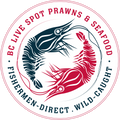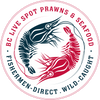When it comes to a healthy diet, wild fish and seafood are an excellent option. They are some of the most nutrient-dense sources of proteins, vitamins, omega-3 fatty acids, minerals and vitamins. Health experts recommend consuming wild seafood and fatty fish twice every week. When there are numerous options, which wild fish is the most nutritious?
Although, there are many species of fish available in the market and are sustainable as well, wild-caught Salmon is well-known for being the most nutritious fatty fish. Unlike farmed fish, wild-caught fish are more safer and nutritious as they have grown naturally in the ocean, rivers and lakes.
If you are out to buy wild salmon, deciding about the kind of salmon is pretty crucial as there are a few different species of wild-caught sustainable salmon.
- Wild Spring Salmon (King Salmon and Chinook Salmon)
- Wild Pink Salmon (Humpback Salmon)
- Chum Salmon (Dog Salmon)
- Silver Salmon (Coho Salmon)
- Wild Sockeye Salmon (Red Salmon)
Most Nutritious Wild Salmon; The Big Reveal
It’s the time for the big reveal. If we take a closer look at the nutrition profiles of all kinds of salmon, it is quite easy to figure out that the award for the most nutritious salmon goes to Wild Sockeye Salmon.
Wild Sockeye Salmon is found in the Northern Pacific Ocean and the rivers falling in it. It weighs around 5- 15 pounds and measures around 2-3 feet. It is also called Red Salmon because of its orange flesh. The orange colour is due to the orange carotenoid called astaxanthin.
Wild Sockeye Salmon is also considered as a superfood. It is an excellent source of protein, omega-3 fatty acids along with important vitamins and minerals. So, why not to have all the components of a balanced diet in one go!
Nutrients In Wild Sockeye Salmon
It is rightly said that wild Sockeye Salmon is the powerhouse of nutrients. To put it in a right perspective, let us check the nutrition profile of a 155 g serving of a wild Sockeye Salmon fillet along with their benefits.
- Calories: 335 only
- Protein: 42 g
- Calcium: 10mg
- Potassium: 580 mg
- Zinc: 1 mg
- Selenium: 58 mcg
- Iron: 1 mg
- Vitamin D: 1040 IU
- Vitamin A: 325 IU
- Omega-3: 2.2gm having EPA =463 mg, DPA=144mg, DHA=868mg
- Vitamin B complex with Choline: 102 mg
- Astaxanthin: 4-5 mg
Protein
Protein plays a vital role in maintaining a good body and health. They are needed to build or maintain muscles, bones, ligaments and tendons. Protein also plays an active part in the synthesis of hormones, neurotransmitters and antibodies. Research recommends the amount of protein one should consume in every meal should be around 25-30 g.
Omega-3 Fatty Acids
Omega-3 fatty acids are essential fats that our body can not prepare on its own. We have to consume them through dietary sources. They are the key to optimum brain health, heart, and overall health. Wild Sockeye Salmon is rich in omega-3. Experts recommend consuming two servings of fatty fish like wild sockeye salmon every week to fulfil your need for omega-3.
Vitamins
Wild Sockeye Salmon is also an excellent source of Vitamin A, B and D3. Vitamin A plays a vital role in normal vision, immune system and reproduction. Vitamin B complex helps to maintain optimal brain function and the nervous system. Wild Sockeye Salmon is a Vitamin D3 rockstar. Vitamin D3 may contribute to great bone health and may also reduce the risk of cancer and cardiovascular diseases and depression.
Calcium
Calcium plays a vital role when it comes to the strength of bones and teeth. It is also important for blood circulation. A study reveals the role of calcium contributing to helping the nervous system in carrying messages from the brain to various parts of the body. Consuming calcium from your diet is very important or else the body will take calcium from your bones when needed.
Selenium
Selenium is also a key player in antioxidant health. It is responsible to make an enzyme that ensures cardiovascular health, better ageing and combating HIV. It may also play a vital role in reducing the risk of cancer, cognitive decline, cardiovascular diseases and thyroid health. The daily recommended amount of Selenium to be consumed is 55mcg. So, consuming only one serving of 155g fillet of wild Sockeye Salmon can easily fulfil your need for Selenium.
Astaxanthin
Astaxanthin is a carotenoid pigment that has many outstanding health benefits. Research reveals that each 100 gm serving of wild Sockeye Salmon has around 3-4 mg of astaxanthin. Studies prove that It plays a key role in reducing bad cholesterol and preventing heart diseases. It may also prevent neurodegenerative diseases. It may also benefit our skin as well.



Leave a comment